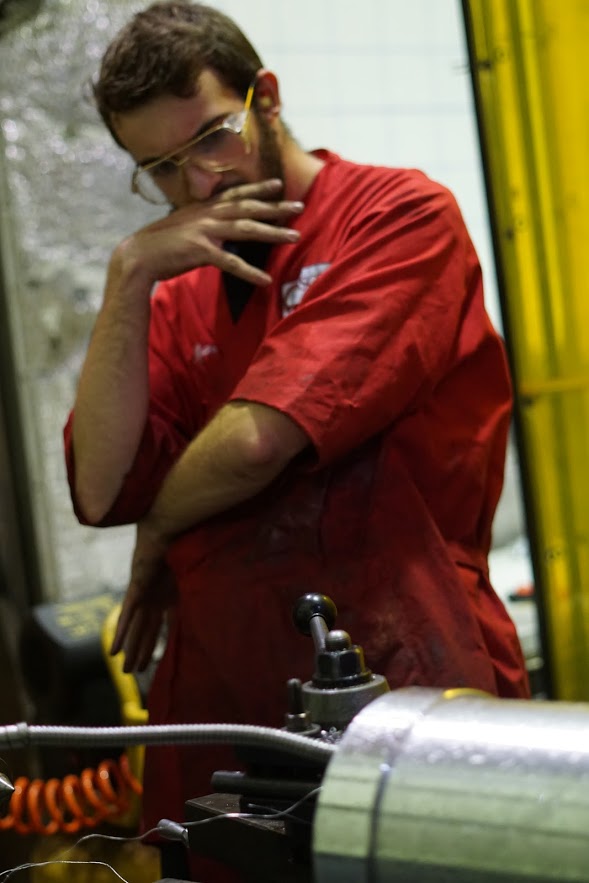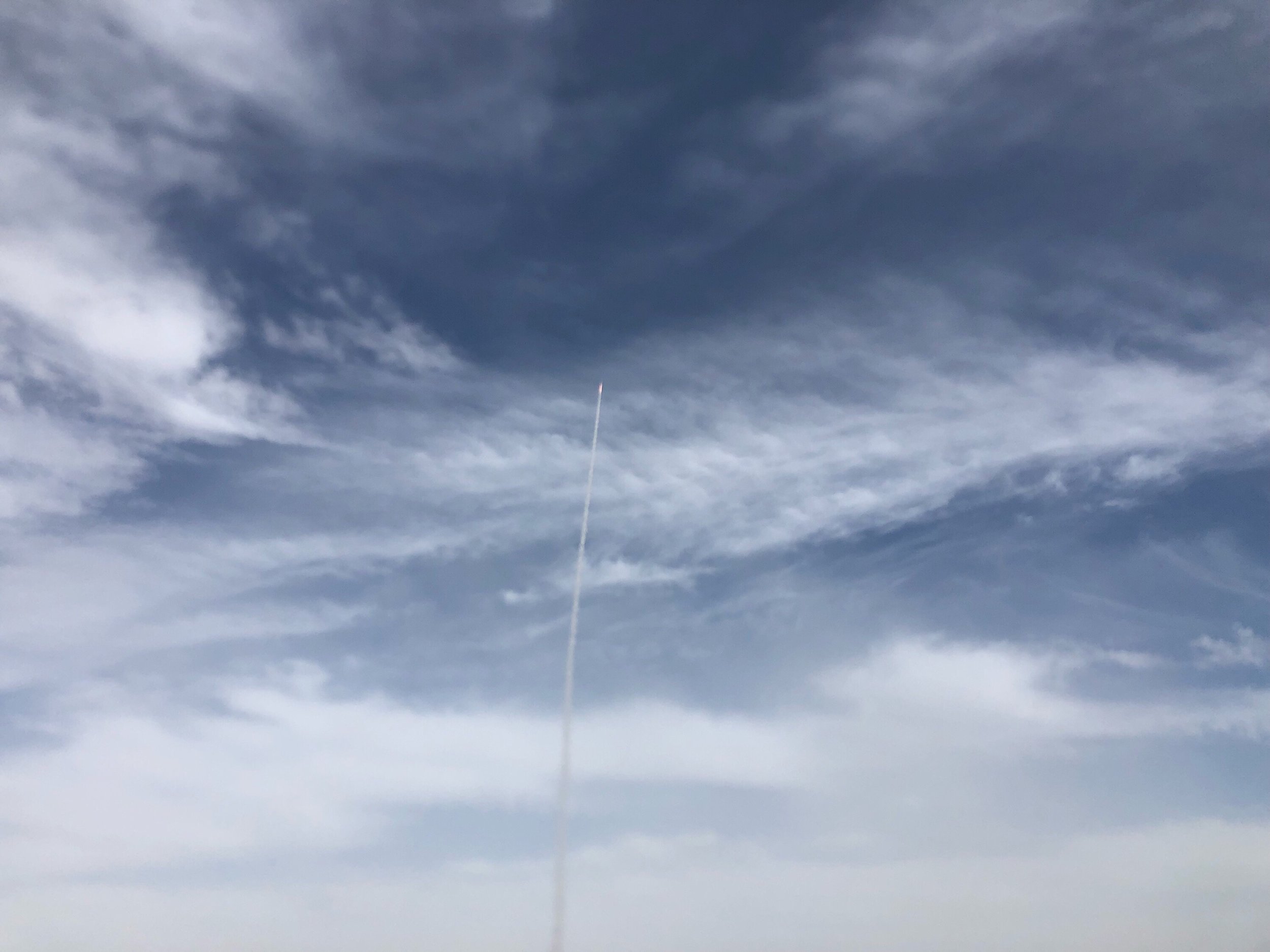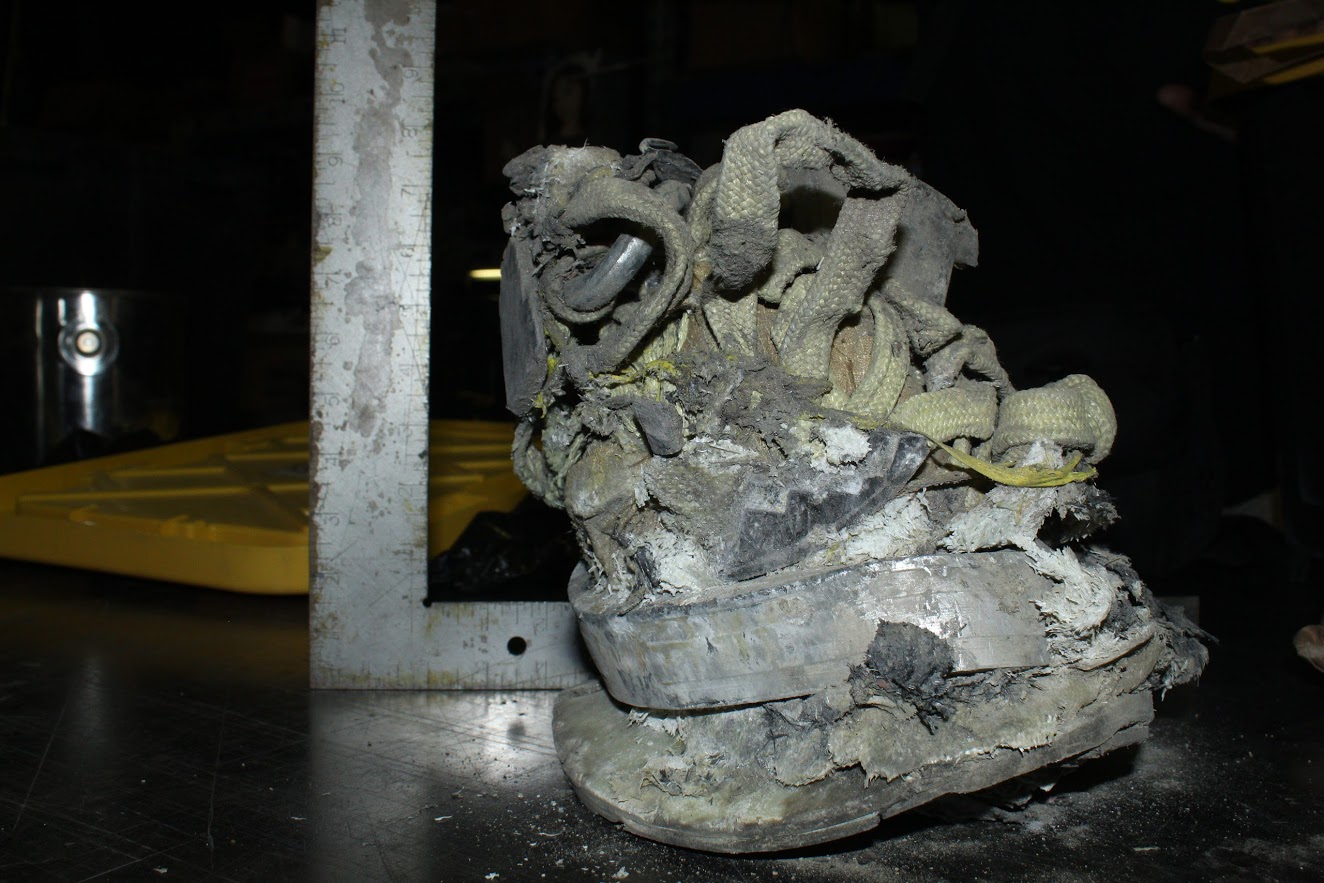There are a thousand ways for a rocket to fail, and very few for it to succeed. Despite nearly 15 years of launching some of the most successful student-designed and built rockets in the world, every launch and every static fire teaches us something new and exciting about the complexity of rocketry.
RPL went out to Black Rock Desert on the weekend of September 28th-30th, 2018, with the intention of launching the first student-designed and built rocket to space in the form of Traveler III. Traveler III was the culmination of over a decade of technological advancements, process improvements, design changes, and countless hours spent building and improving high-powered rockets of all shapes and sizes. From the initial failures of Traveler I and II, to the subsequent redesign and testing of the motor insulation, avionics and recovery subsystems, and motor, Traveler III was, in every sense, the most technologically advanced vehicle that RPL has ever flown. With nearly every subsystem tested previously, such as in Déjà Vu’s multiple flights, Fathom II’s record-breaking launch, and Graveler II’s static fire, RPL’s current and former members felt confident that this vehicle would finally be the one to accomplish the founding goal of this lab: to be the first undergraduate group to entirely design, build, and fly a rocket past the Kármán line, at 328,000 feet, into space.
The Graveler II static fire, the largest successful amateur composite static fire ever
Following the successful static fire of Graveler II in February of 2018, which proved that the design of the motor and its insulation was sound for a future spaceshot, RPL devoted all of its resources into developing Traveler III. Following the issues that plagued the Graveler II campaign, lab was cautiously optimistic in the build of TIII, hoping to use its experiences solving past problems to overcome any future issues that would come up. The end of the semester brought a frenzy with it to RPL, as the members realized the intense amount of work that needed to be completed to launch Traveler before the summer began. Long hours and many nights spent watching the oven, coding the avionics system, and machining the final flight components later, and RPL sat there, after completing finals in mid-May, with a vehicle nearly ready to go to space.
Damian machining the fins
Dennis preparing the nosecone for integration with the nosetip
Herein lies the first of the teaching moments from this launch campaign: the integration of the motor cartridge into the flight case. Striving to make the May 2018 launch windows for Traveler III, a team drove out to the off-campus facility where RPL manufactures and stores its propellant just days after graduation for this integration process. For the next 48 hours, with several calls for reinforcements to come for assistance, the integration process was unsuccessful, leading the lab leadership decided to postpone the launch attempt until the fall. New issues occurred in the integration process that were either unanticipated or had never occurred to RPL before plagued the entirety of this time spent here, and the group decided to wait, work to solve these problems, and come back in the fall with fresh faces, new tools and processes, and a better chance for success, rather than rushing to meet a launch window.
Rob admiring Traveler III during integration in May
Max pondering over his integration tool that solved the issues that prevented integration in May
Fast forward to August. A new school year meant a new class of young, excited freshmen and a bright outlook from the rest of lab on the future launch of Traveler III. The first month of the semester was spent perfecting the rocket that sat in lab, touching up spots on the body and finishing the final pieces of hardware to ensure that the vehicle launched was as good of a vehicle as the lab could make. Additionally, the avionics team used the extra time to redevelop their system, as they worked to get rid of issues that had plagued previous launches and optimize the payload for its mission. Nevertheless, RPL was simply waiting for the completion of the BALLS rocketry competition, as this meant that the flight windows for Traveler III would soon follow. The re-integration of TIII occurred with no issues whatsoever, as the time that the lab spent developing new tooling and processes over the summer rectified all of the challenges that it had faced just a few months prior. RPL finally had a spaceshot vehicle, ready to fly, for the first time in nearly 3 and a half years.
The avionics team working hard on their system revamp
The avionics sled nearing completion
The trailer en route to Black Rock
The drive out to Black Rock went about as well as any follower of RPL’s history could predict. The trailer left campus on Thursday, September 27th, 2018, picked up the integrated rocket, and set its sights on the playa some 600 miles away. The trailer had its now semi-traditional breakdown on the side of a highway in Nevada, but nothing that a few trips to some stores couldn’t fix. After about 6 hours of unplanned repairs, the trailer, with a few cars surrounding it, rolled onto the playa and found its way to the launch site just as the sun was rising on Friday morning.
The caravan finally making it onto the playa
A full view of the campsite on Friday
Unfortunately, the delays with the trailer did not mean a delay with the launch. Because of that, the avionics and tower teams went right to work, preparing their systems for dry runs that night so as to be prepared for the launch the following morning. As teams worked throughout the day, preparing the vehicle, its subsystems, and the launch infrastructure for the first RPL launch in a year and a half, more cars would roll onto the playa, providing much needed manpower from lab members and oversight from alumni to assist in these crucial preparations. Some sandstorms forced teams into cars and trailer, and even destroyed an E-Z UP tent, but the tenacity of this lab was on full display as everyone strove to finish their work even despite the challenges. As the sun began to set on the playa, the teams ate some well-deserved food put together by the Lunch Ops team, and quickly went to work readying the tower and the vehicle for a vertical dry fit. The full moon that night only added to the excitement, as the team assembled around the vehicle around midnight for one final picture before flight.
A dust storm approaching the campsite
The whole lab signing the fins before launch day
After a few, short hours of sleep, everyone was back up, working on final preparations for the launch. The team had originally planned on a 9 AM launch window on Saturday, but after noticing that the sandstorms began to take effect as the morning pressed on, plans were changed to shoot for 8 AM instead. Nevertheless, problems arose with the recovery and avionics payloads and their integration into the flight vehicle, and these delays pushed the team right into the impending dust storms. At this point, people returned to their cars to wait out the dust, while the subsystems graciously got more time to perfect their work before launch.
The nozzle plug
At around 12 PM, the dust cleared up, and the lab strove to make the launch happen before the next sandstorm, which looked to be about 2 hours out. After successful integration of the avionics and recovery systems, it was finally time. Traveler III was brought over to the launch tower, the igniter inserted, the tower brought to its final launch angle, and the pad cleared. At this point came the most significant learning moment of this launch campaign.
With the igniter inserted and the pad cleared, a team waited at the ignition table, while the avionics team worked to activate the unit and resolve any last-minute issues. Due to a miscommunication between these two teams, an “Avionics hold” was misheard over the radios as an “Avionics go”. Thus, Traveler III was launched with no warning to the Avionics team, and the vehicle ascended off the pad without the payload placed into a state that would transmit data or deploy the recovery systems. As Traveler III rose above the playa, it clearly followed a stable flight path, which meant that the aerodynamic issues of the past were not at play, and a full motor burn was observed as well, leading to the conclusion that the vehicle was well on its way to space. However, the lack of a recovery system meant that this rocket was now ballistic, and the distinct sound of a sonic boom from its reentry was heard across the playa around 5 and a half minutes after launch, as the simulations predicted from a ballistic flight.
Traveler III clearing the tower
Traveler III soaring through the clouds
Following this, the team regrouped to discuss its options. Yet another dust storm forced everyone into their cars for a short time, but clear skies followed, which allowed recovery teams to comb across the playa in search of the vehicle. Hours of searching that afternoon and the next morning, however, led to no results; instead, the only pieces of rockets found were from BALLS launches previously in September, in addition to a few surprising remnants from the Traveler I and DCX launches years earlier. Because of this, the lab drove back to campus, asking some locals to keep an eye out for the rocket along the way, with little hope of recovering TIII.
But hope is not lost! Some kind souls from around Black Rock messaged RPL that they had potentially found the rocket and, after a long return to the playa, a team scavenged and found the remnants of the vehicle. Traveler III, now in countless pieces, was found in one centralized location, indicating that the vehicle remained intact through descent until it hit the ground. The post-mortem of the vehicle found interesting results, including the nosetip pictured below which bent due to impact rather than shattered, but no data was recovered from the passive Avionics system or the Go Pro cameras on-board.
The nosetip after impacting the ground at nearly Mach 2
The recovery payload didn’t like the ground apparently
Needless to say, Traveler III did not go as planned. The location of where the rocket was found, combined with the simulations and observation of a full motor burn, indicates that the vehicle did in fact pass the Kármán line and ascended over 370,000 feet. However, the lack of data from the flight prevents us from claiming to have reached the founding goal of lab, and thus RPL will try again! As the time of writing, the build process for Traveler IV is progressing quite well, and the lab will look to launch in the spring of 2019. The lessons that this group learned along the way throughout this launch campaign cannot be quantified and will contribute to making USCRPL the very best in the future. As the lab lead Dennis Smalling said to the rest of lab:
“Rocketry is difficult and unforgiving. Little mistakes can have catastrophic consequences. This is true for small-time amateurs, universities, multi-billion dollar companies, and government programs. What defines a successful program is not the ability to never fail; it is the ability to learn, to persevere, to improve, and to keep trying. USCRPL has launched 21 rockets and conducted dozens of static fires over the course of 13 years. After all this effort we are finally on the cusp of achieving our founding goal: to launch the first student designed and built rocket to space.”
This launch was truly the epitome of the phrase, “Space or Nothing”. This lab has grown stronger as a result of these failures and is well prepared for future projects and their challenges. RPL is excited for the advancements that the lab will find along the way and looks forward to the day that this group can finally go home with the knowledge that it built a rocket that went to space. To everyone who worked on Traveler III, from the case layups in Spring of 2017 to the integration of the last components just minutes before launch, thank you. The time and effort you put into this vehicle will never be forgotten, and your work has only made RPL stronger in the process. Every time you step through the door to lab, always remember that you made this incredible rocket that did amazing things, and that can never be taken away from you. Failures should not be seen as a disappointment, but rather as a learning opportunity, and the people in this lab are the best equipped engineers to take these learning opportunities and use them to go to space and beyond. The exciting projects of this lab’s future are yours to take ownership of, and this group is proud to know that RPL continues to do the difficult and the impossible on a daily basis. And, with that, Flight On!


















